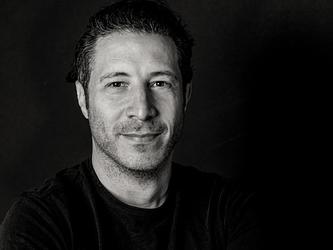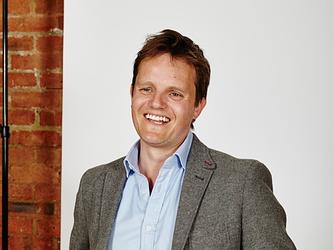Q&A with Roger Perowne, chief executive, Savanta
What was the motivation for merging the MIG Global businesses into one company?
Fundamentally, this industry has such potential to do some really great things, but it requires a scale to make the big investments in tools and the data you want to capture – but alongside that, also ensure that you have a personalised boutique feel. The best way of doing that was to bring everyone together into one and keep our entrepreneurial feel and ways of working.
It’s about having the scale to make the big investments alongside personalisation from a client point of view and balancing those two. This was the best way to do it – as one brand with a single P&L on a global basis and a shared mission.
And also having a really clear vision – our business is about helping our clients make better decisions and moving the conversation around data, which seems to have got quite polluted by privacy.
One big thing we’ve done is get rid of line management; we just have career management. But we also have the financial muscle and scale to invest in new tools like BrandVue, which was a multimillion-pound investment that you just couldn’t do as a 30-person business.
Why ‘Savanta’?
Savanta is based on the word savant – a knowledgeable person. Before I talked to anyone internally about what the plan was, I thought that before you tell a story you need a hero, and so I need a name. It’s easy to pronounce, it doesn’t mean something rude in a different country, and it’s ownable.
It also doesn’t box us in too much. We describe ourselves as an intelligence company rather than a data company or a research company, which seems to go quite well with the idea of Savanta.
You mentioned changing away from line management to career management. What does that mean exactly?
A few things. As we got bigger – we’re now 200 people – we didn’t want to suddenly become corporate. The last thing we want to do is bring in slightly old-fashioned thoughts of line management and ‘command and control’ approaches.
Instead, it comes down to supporting the best people and ideas wherever they come from, and not [thinking] that the people at the top know everything, that they’re the oracle. With that idea, you need to really support people’s careers and give them some flexibility. A lot of younger people want to travel the world and we don’t want to lose them, so we’re starting to look at ways of having ‘digital nomads’ – people working with us on an agreed freelance basis because they’re highly trusted, digitally set up and add a huge amount of value to our business and clients.
I’m lucky because my boss is Tim Dyson, who set up Next 15. I work for an entrepreneur, I’m an entrepreneur, and at least half of the key management of the company are entrepreneurs. It’s a very rare situation to have a wide range of entrepreneurs working together – it doesn’t happen very often, and that’s a real pleasure because normally it’s a lone wolf and it’s all about their ego.
What other changes to how the business operates have occurred as a result of the merger?
We are moving away from a very set team structure to having practices, deep pools of expertise, inspired by the consultancies. People can work on a wide range of project types and be in multiple practices. For example, you might be a deep expert in wealth and luxury but also have skills in planning or quantitative tracking, so you can be working on a wide range of projects. From our clients’ perspective, we can put together the team they need for that project, however big or small it is, so it gives you a more flexible approach.
We have also made a major investment in marketing. At a time when some of the bigger brands in the industry have maybe retrenched a little, we want to be quite bold.
Did you face any challenges with the merger in terms of buy-in from Next 15?
Next 15 has been great. One of the good things about being run by an entrepreneur is they are open-minded and I think they see it as a logical step forward.
We spent six months working with senior management and the various owners and managers of the businesses to make sure that they were as excited as we are, and the proof in the pudding is that everyone stayed. That was the heart of all this – not to rush it but do it carefully to ensure that everyone wanted it.
A lot of people think entrepreneurs are megalomaniacs but they’re not really – they just want to be involved in an exciting story. They had all built their own little bungalows and they were really pleased with them, but I said ‘if we all work together, we can build a skyscraper, and isn’t that a challenge that’s worthy of our attention and focus?’ That seems to resonate.
What conversations did you have with clients beforehand?
Beyond our general due diligence checking whether it was going to cause problems or not, we were quite quiet. We told clients the week before the formal launch – we phoned them and explained what was happening. I think they feel that because we’ve got a bit more scale we can meet more of their needs while retaining the personal boutique feel. We hope we can sustain both aspects. So far, the feedback has been very positive.
You’ve just acquired Wealth-X’s custom research division. What other acquisitions do you have planned and what areas do you intend to invest in?
I think that’s our sixth or seventh acquisition, there’s always a chance there will be more in the future. Ultimately, what we’re looking for is the values we share – Torie Bold and Winston Chesterfield and their team are amazing; they’re entrepreneurs, they do fantastic work, they’re deeply knowledgeable and ambitious, wanting to make a bigger impact.
With acquisition, it’s a bit like a family having a new child – it makes everyone happier. There’s always new energy and new opportunities for people within the company to work in different areas with different clients. So, we certainly wouldn’t stop looking for the right people. But we’d never acquire for scale – we acquire for new talent, knowledge and skillsets and the right cultural fit. The check is, will our clients, their clients, our employees and their employees benefit? And if it’s a tick for all of those, generally it’s the sort of thing we’d be interested in.
You mentioned you’ve increased your headcount to prepare for the merger. In which functions did you focus your hiring?
We have an innovation hub in Cambridge with a team of 20 people covering developers, strategists and analysts, so that’s been a big area.
We’ve got a bigger sales and marketing team, bigger commercial team and the last main aspect is making sure that our research talent is matched by really excellent client management teams – making sure we’ve got really brilliant account managers and client services people and encouraging collaboration between the two.
We have a single P&L to ensure no-one fights internally. The biggest threat to a successful business is internal structure and fighting – as soon as you take that away and make it a sharing and supportive culture, you have so much better chance of delivering great work to clients, staying innovative, new ideas and a happy productive team.
How will this change the way the combined businesses interact with the rest of Next 15?
We’ve always had a close relationship. Maybe with a single brand we’re a bit more accessible – beforehand [people might have asked] ‘should I contact Morar or Circle, I don’t really know the difference?’. We now can be a single point of contact and serve them better and hopefully do more for them in time.
What are your next big priorities?
If our job is bringing together brilliant people and ideas alongside the best data and empowering that with the best technology, that’s going to keep us busy for a while. That trilogy allows us to be more productive, help our clients make better decisions and be set up for future growth. We expect to continue to grow – four years ago we had five people and now we have 200.

We hope you enjoyed this article.
Research Live is published by MRS.
The Market Research Society (MRS) exists to promote and protect the research sector, showcasing how research delivers impact for businesses and government.
Members of MRS enjoy many benefits including tailoured policy guidance, discounts on training and conferences, and access to member-only content.
For example, there's an archive of winning case studies from over a decade of MRS Awards.
Find out more about the benefits of joining MRS here.














0 Comments